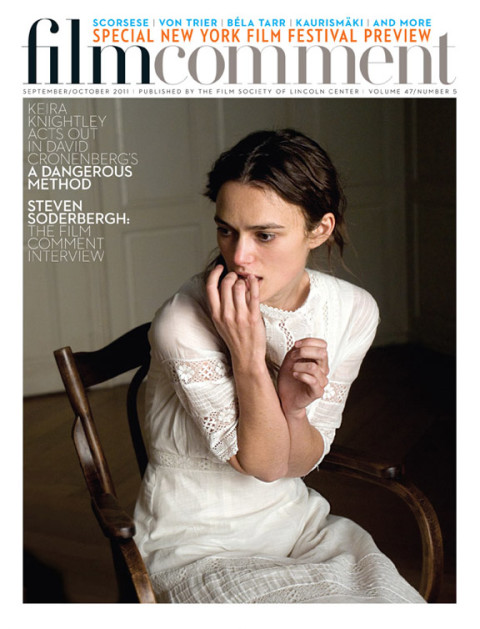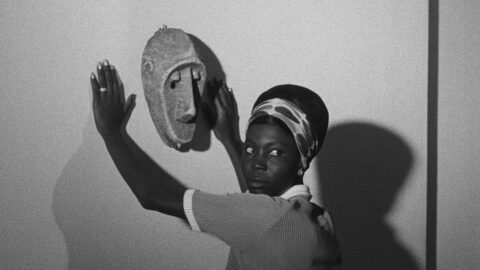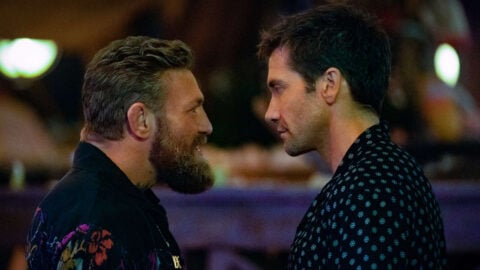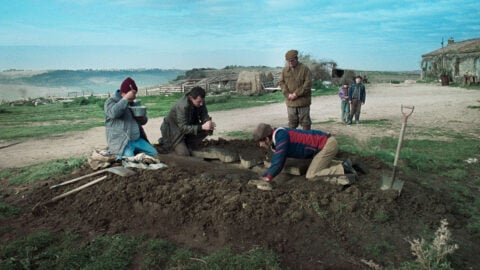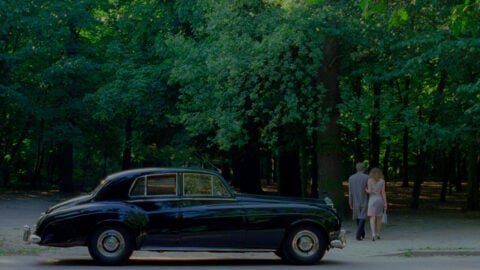
“They were into you, so they made you a tape” is the simple description of, and rationale for, a mixtape according to Cassette From My Ex, a website devoted to these audio artifacts. Mixtapes (distinct from dance mixes) were carefully edited compilations of obscure and familiar songs arranged to express the maker’s interests and tell an aural story, often designed for a particular and/or intimate listener. Göran Hugo Olsson’s mixtape documentary is a chronological, musically structured collage tracing the arc of the Black Power movement from its inception during the civil rights era through its dissolution as drugs began to erode black communities in the Seventies, created with rarely seen footage culled from the archives of Swedish Television.
The film opens with an image that eloquently evokes the careful approach of the filmmakers: a clip of an American flag threading through a flatbed editing console. Olsson and his editorial team allow the compelling and often beautiful archival material to flow unencumbered by traditional documentary interventions, with each of the nine chapters introduced by a superimposed date with small titles of brief historical context to situate the viewer. The spare but driving score by the Roots that weaves throughout is contemporary but grounded (has roots) in the R&B/soul of the period. Significantly, Olsson includes multigenerational commentators in voiceover, among them Kathleen Cleaver, Erykah Badu, Questlove, Robin Kelley, and Sonia Sanchez, whose contributions are not “expert opinions,” but historically informed and inflected by personal recollections and experience. Unseen, they reflect upon and riff off the images, offering fresh perspectives on the objectives and key players of the movement. Olsson includes material that might typically have been considered outtakes and lets clips play at length, reinforcing an impression of intimacy with the participants in the scene.
Icons Stokely Carmichael and Angela Davis are seen in montages laughing and hanging out with racially mixed friends and audiences, and speaking publicly with wit and charisma in less incendiary ways than usually depicted. Memorably, Carmichael offers to interview his own mother, Mabel, gently compelling her to address their family’s personal difficulties in racialized terms (which shift from “colored” to “negro” to “black” as the chapters progress), thereby lending empathetic background to Carmichael’s ideological rhetoric. When Davis responds to a naïve inquiry about Party violence with a personal recollection of the Birmingham church bombing victims her quivering afro fills the frame, emphasizing her words. We also see a flirtatious Harry Belafonte visiting the King of Sweden with Martin Luther and Coretta Scott King; Eldridge Cleaver deploying frustrated derision (“Oink Nixon, Oink Humphrey, and Oink Wallace”) in a speech; Bobby Seale in a Persian lamb hat; Huey Newton, glamorous in double-breasted leather, and Louis Farrakhan with a Cheshire cat grin, behind an enormous stage-like desk, with black and white drapery and a tiny image of Elijah Muhammad.
Equally precious are scenes of less recognizable or unknown subjects in the varied and astonishing street footage. Black teens angrily despair for the future of the country as they wait to view Robert Kennedy lying in state at St. Patrick’s Cathedral; the 1973 segment includes the incisive rhyming of Lewis Michaux of the African National Memorial bookshop; and throughout black people are pictured socializing or going about their business primarily in urban settings on both coasts. The vibrant color scenes of Seventies Harlem (some shot near my aunt’s long-gone Satin Doll Bar) are almost nostalgic. The residents and neighborhood seem to emerge from memories of everyday sights I’ve rarely seen documented (bringing to mind the films of Kevin Jerome Everson, who, in response to the scarcity of archival footage of African Americans, re-creates images of blacks in quotidian situations and spaces). And while the hairstyles and fashions of the time are entertaining, the sartorial iconography of liberation—the afros, the Panthers’ leather jackets, the bow ties and blazers of the Nation of Islam—assert that Black Power also lies in expressive style and visibility in daily life.
One can only speculate about what the intended purpose was for the material shot by the Swedish journalists, whom we glimpse, amusingly, during what could be described as a “Blaxploitation” tour of Harlem. Fortunately for us, the various filmmakers did not figuratively heed the tour guide’s admonition to stay out of “this neighborhood only for black people,” persistently covering civil rights politics over the decade and across the Diaspora. By unearthing and arranging this small selection of their filmed observations and being “into it,” Olsson’s documentary humanizes a durable and uniquely American emancipation struggle, inviting audiences of diverse generations to reconsider the global influence of the Black Power movement.



